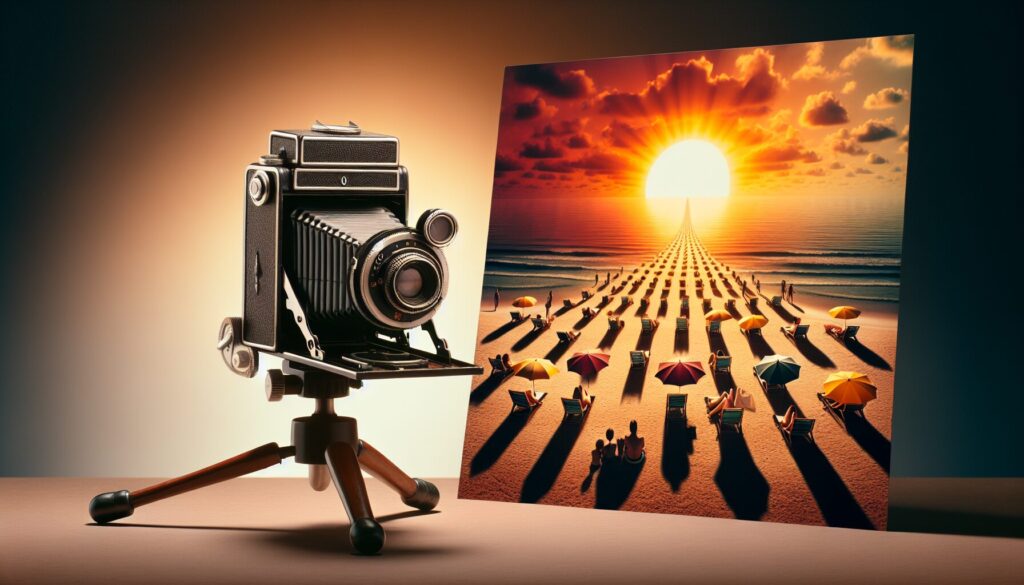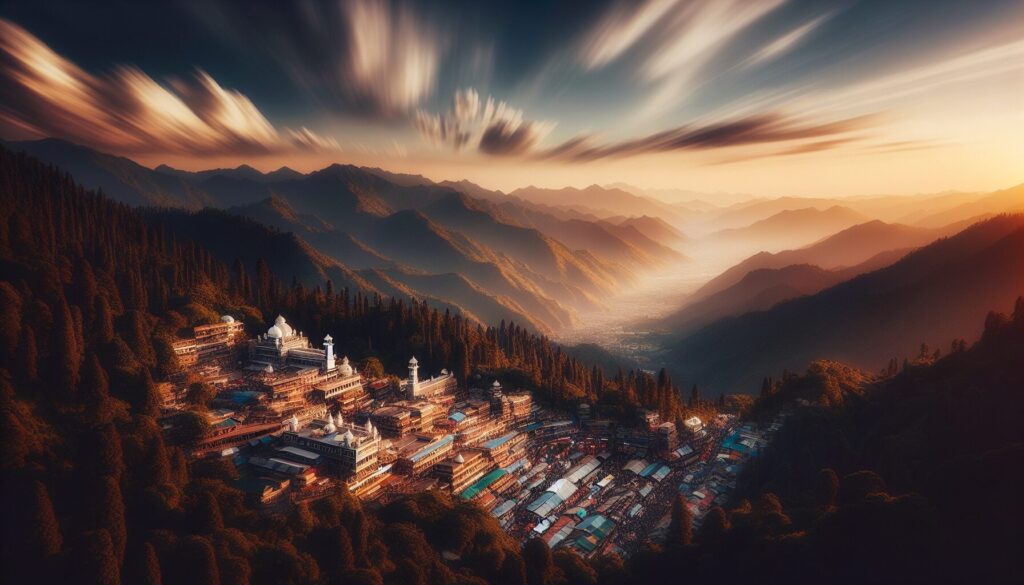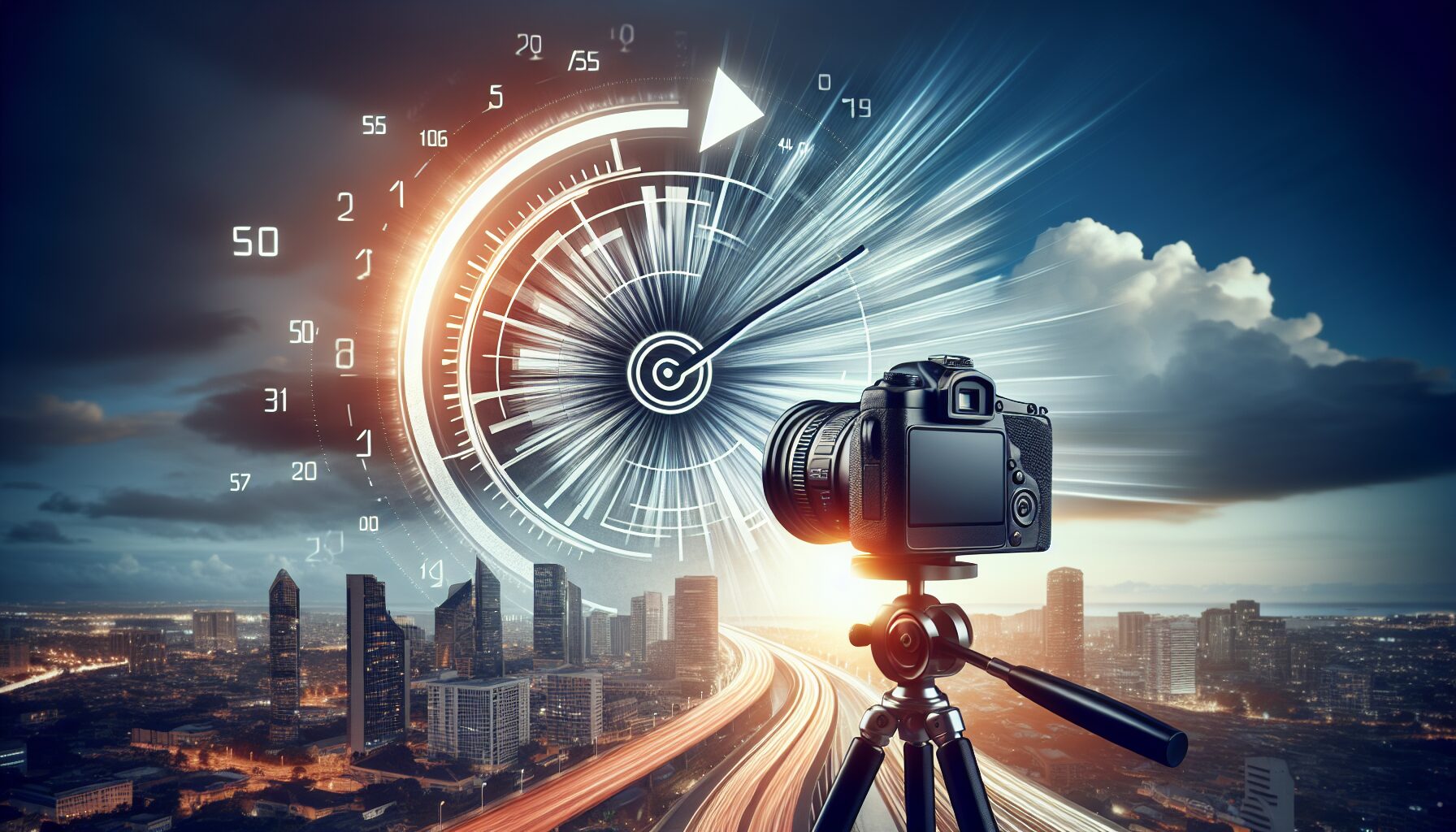Exploring the vibrant landscapes of Pakistan through time-lapse photography is an adventure like no other! I remember my first time capturing the bustling streets of Lahore with my trusty Canon EOS R5. Equipped with a 24-70mm f/2.8 lens, I set my camera to ISO 100, f/16, and a shutter speed of 1/30s. The results were breathtaking! This technique, which involves taking a series of photos at set intervals, beautifully condenses time, revealing stories hidden in plain sight. The stunning transformation of the Badshahi Mosque at sunset, for example, turns into a mesmerizing dance of colors. Additionally, the serene beauty of the Hunza Valley, with its shifting clouds and changing light, showcases nature’s grandeur. Time-lapse photography in Pakistan is more than just a hobby; it’s a way to tell stories that words alone can’t capture. Dive in and discover the magic for yourself!
Related: The Ultimate Guide to Cityscape Photography in Pakistan
The Role of Time-Lapse in Enhancing Storytelling

Time-lapse photography is like the magic spice in storytelling, especially here in beautiful Pakistan. It’s all about capturing change over time in a way that our eyes simply can’t see in real life. You know, I remember the first time I set up my Canon EOS R5 with a 24-70mm f/2.8 lens at the stunning Hunza Valley. The settings were crucial—I went with ISO 100, f/16, and a shutter speed of 1/100s. Setting it up on a sturdy tripod, I used an intervalometer to snap a shot every 30 seconds as the sun dipped below the mountains. The result? A breathtaking sequence that told a story of nature’s grandeur.
Now, why does this matter for storytelling? Well, time-lapse is a master at highlighting the passage of time, which adds emotional layers to narratives. Imagine capturing the hustle and bustle of Lahore’s streets from dawn till dusk. Each frame tells a story of its own, but together, they weave a rich tapestry of life and energy. However, it’s not just about speed. Time-lapse can focus the viewer’s attention on changes, like shadows creeping over Faisal Mosque as the sun sets, which creates a storyline of its own.
Visual Storytelling and Emotional Impact
Furthermore, time-lapse photography offers a unique perspective that enhances visual storytelling. It allows viewers to experience a day in seconds, which can evoke strong emotions. This technique is perfect for capturing Pakistan’s diverse landscapes, from the serene shores of Gwadar to the bustling bazaars of Karachi. By speeding up time, you’re not just showing moments; you’re crafting a narrative that can resonate deeply with people.
Ultimately, integrating this technique into your storytelling toolkit can elevate your content. It provides a fresh way to engage your audience, making them feel as though they’re part of the unfolding story. Whether it’s documenting the changing seasons in Murree or the vibrant culture festivals across the country, time-lapse photography is a powerful tool for storytelling in Pakistan.
Capturing Cultural Moments with Time-Lapse
Time-lapse photography is like a magical journey through time, capturing the heart and soul of cultural events in ways traditional photography simply can’t. Imagine standing at the bustling Lahore Fort during the vibrant Basant festival. The sky is a canvas of colorful kites dancing in unison. Using a Canon EOS R5 with a 24-70mm f/2.8 lens, I set the camera to ISO 100, f/16, and an interval of one shot every ten seconds. This setup beautifully encapsulates the energy and rhythm of the celebration over several hours.
In Pakistan, with its rich tapestry of cultural events, time-lapse storytelling becomes an essential tool. It captures the essence of moments that define our heritage. Whether it’s the grandeur of the Shandur Polo Festival or the spiritual ambiance of the Eid Milad-un-Nabi procession, time-lapse photography allows us to see beyond the ordinary. According to National Geographic, time-lapse photography can reveal patterns and rhythms invisible to the naked eye.
Preserving Heritage Through Time-Lapse
Time-lapse photography also serves as a bridge connecting the past with the present. It immortalizes traditions and celebrations for future generations. By using advanced techniques like hyper-lapse, we can even capture the dynamic movement of people and environments, offering a unique perspective on cultural events. For instance, positioning your camera on a stable tripod and panning slowly across the landscape adds depth and motion to your shots. Therefore, these moments become timeless stories shared with the world, showcasing the vibrant culture of Pakistan. Furthermore, as we delve into the world of time-lapse, we embrace the art of storytelling through each captured frame.
Technical Tips for Time-Lapse Photography in PK
Hey there, fellow photography enthusiast! So, you’re diving into the fantastic world of time-lapse photography in Pakistan, huh? Let me tell you, it’s a journey worth taking, especially with the country’s stunning landscapes and vibrant cityscapes. I remember my first time experimenting with time-lapse in Murree. I used a Canon EOS R5 with a 24-105mm f/4 lens. Trust me, the results were mesmerizing!
Now, let’s talk about some technical tips to get you started. First, you’ll need a sturdy tripod. The stability is crucial to avoid any camera shake. I personally recommend the Manfrotto BeFree Advanced. It’s lightweight and easy to carry around, especially when you’re exploring the rugged terrains of Northern Pakistan.
Camera Settings and Techniques
Next up, let’s dive into settings. Start with a low ISO, around 100, to minimize noise. Set your aperture between f/8 and f/16 for a deep depth of field. The shutter speed can vary depending on your subject, but usually, a slower speed captures the movement beautifully. When I shot a bustling evening at Karachi’s Clifton Beach, I found a 5-second interval worked wonders, capturing the ebb and flow of the crowd.
Don’t forget about post-processing. Software like Adobe Lightroom can enhance your shots, especially when adjusting the exposure and contrast. For those breathtaking cityscapes, check out this detailed guide on cityscape photography in Pakistan to refine your skills further.
Lastly, consider using an intervalometer if your camera doesn’t have a built-in function. Devices like the Neewer Timer Remote Control make it a breeze to set intervals and exposure times. With these tips, you’re all set to capture the essence of time-lapse storytelling in PK. Enjoy the adventure!
Creative Uses of Time-Lapse in Pakistani Media
Time-lapse photography has really taken storytelling in Pakistani media to a whole new level! I remember when I first stumbled upon this technique using my Canon EOS R5 with a 50mm f/1.8 lens. It was during a trip to the majestic Hunza Valley. I set the camera to ISO 100, f/16, and a shutter speed of 1/30s. Watching those clouds dance over the mountains in fast motion was like seeing nature paint its own masterpiece. Pakistani filmmakers and content creators are embracing this style to capture the vibrant life and evolution of our cities and landscapes.
In Pakistani dramas, time-lapse is often used to show the passage of time in a single frame. It’s particularly effective when depicting the hustle and bustle of cities like Lahore and Karachi. Streets fill up with life in seconds, illustrating the dynamic nature of urban life. Additionally, it highlights the changing moods of these cities from dawn to dusk. The technique creates a visual poem of sorts, where viewers can feel the pace and energy of our beloved cities.
Documenting Cultural Heritage
Time-lapse photography also plays a significant role in showcasing Pakistan’s rich cultural heritage. Take, for example, the stunning architecture of Badshahi Mosque or the intricate designs of Shalimar Gardens. By speeding up the transition from day to night, time-lapse captures the essence of these historical sites. It brings out their grandeur and timeless beauty, making them accessible to audiences worldwide.
Moreover, time-lapse is being used in documentaries to portray seasonal changes in rural areas. The blooming of flowers or the harvesting of crops becomes a symphony of colors and movements. These visual stories are not just about aesthetics; they encapsulate the essence of life in various parts of Pakistan. Therefore, this technique is not merely a tool but an integral part of storytelling that connects us with our roots and future.
Challenges and Opportunities in Local Storytelling
Capturing the essence of local stories in Pakistan through time-lapse photography can be both challenging and rewarding. I remember using my trusty Canon EOS R5 to capture the bustling streets of Lahore. The 50mm f/1.8 lens was perfect for this. I set the ISO to 100, aperture to f/16, and shutter speed to 1/30s to get that perfect balance of light and motion. However, one of the main challenges is the unpredictable weather, especially during the monsoon season. The constantly shifting clouds can either add drama to your shots or completely obscure your subject. It’s all about timing and patience.
Another challenge is dealing with the vibrant yet chaotic street life. In Karachi, for instance, the blend of modern skyscrapers and traditional markets creates a unique backdrop. But, capturing it requires an understanding of the local pulse. You need to anticipate the movements of people and vehicles. Using advanced techniques like a polarizing filter can help reduce glare and enhance colors, making your storytelling more vivid.
Opportunities in Capturing Local Culture
Despite these challenges, time-lapse photography in Pakistan offers immense opportunities. The country’s diverse landscapes, from the majestic mountains in the north to the serene beaches in the south, provide endless possibilities. You can tell stories of resilience and beauty through your lens. Take the ancient city of Mohenjo-daro, for example. Documenting its ruins as the light changes throughout the day can bring history to life in a way words alone cannot.
Furthermore, engaging with local communities can enrich your storytelling. Collaborating with local guides or historians can provide deeper insights. This collaboration not only enhances your work but also supports local knowledge and traditions. Remember, every frame you capture is a piece of the larger cultural tapestry that makes Pakistan so unique.
Conclusion: The Future of Time-Lapse in Pakistani Storytelling

Time-lapse photography has this magical ability to capture the spirit of Pakistan’s diverse landscapes and bustling cities. I remember a trip to Skardu with my trusty Canon EOS R5 and a 24-70mm f/2.8 lens. The camera was set to ISO 100, f/16, with an interval timer set for one shot every three seconds. Watching the clouds dance over the mountains was an unforgettable experience. This technique lets us showcase the beauty and transformation of places over time. It’s like telling a story that unfolds right before your eyes but at a pace that’s captivating and engaging.
Pakistan’s storytellers are increasingly turning to time-lapse photography to enrich their narratives. Imagine the grand transformation of Lahore’s skyline or the serene unfolding of sunrise over the Arabian Sea. These visuals add depth and emotion to any story. Techniques like hyper-lapse, where the camera moves slightly between each shot, create dynamic sequences. I once tried this in Karachi, capturing the hustle and bustle of Saddar with a 50mm f/1.8 lens. The result was a vibrant portrayal of city life, with every frame telling its own story.
The Technological Shift
With advancements in technology, time-lapse is becoming more accessible. Even smartphones now offer time-lapse modes, making it easier for budding photographers to experiment. This democratization of technology is set to revolutionize storytelling in Pakistan. With platforms like YouTube and Instagram, creators can share their unique perspectives with the world. This new wave of digital storytelling holds immense potential to showcase Pakistan’s rich cultural tapestry on a global stage.
In the future, as more creators embrace this technique, we’ll likely see an evolution in how stories are told. Pakistani filmmakers and photographers have a unique opportunity to craft narratives that resonate both locally and internationally. The marriage of tradition with modern technology promises to bring Pakistani stories to life in ways we’ve never imagined before. The possibilities are as vast as the stories waiting to be told.
Conclusion
In essence, time-lapse photography in Pakistan is a powerful tool for storytelling that beautifully captures the dynamic essence of the country’s landscapes and cultural heritage. The technique allows photographers to condense time, revealing hidden stories that evoke strong emotional connections. Whether documenting the lively streets of Lahore or the serene beauty of Hunza Valley, time-lapse enhances visual storytelling by highlighting the passage of time and showcasing the rich tapestry of Pakistani life. Despite challenges like unpredictable weather and chaotic street life, the opportunities for capturing unique local stories are immense. As technology advances and becomes more accessible, time-lapse photography is set to transform Pakistani media, enabling storytellers to craft narratives that resonate on both local and global stages. The future of storytelling in Pakistan promises to blend tradition with modern innovation, offering a fresh perspective on the nation’s diverse cultural and natural wonders.
Continue Exploring
Unlock the timeless beauty of black and white photography by mastering techniques that turn ordinary shots into extraordinary art. Dive into expert tips and secrets that will elevate your photography skills to the next level.
Frequently Asked Questions
How does time-lapse photography enhance storytelling in visual media?
Time-lapse photography enhances storytelling by allowing creators to depict the passage of time in a visually compelling way. It captures gradual changes in the scene, such as the transition from day to night, blooming flowers, or bustling cityscapes, offering viewers a unique perspective that enriches the narrative and emphasizes the story’s progression.
What are the benefits of using time-lapse photography for storytelling in documentaries?
In documentaries, time-lapse photography provides a powerful tool for illustrating long-term processes and capturing the essence of a story. It can effectively convey themes of change, growth, and transformation, making abstract concepts more tangible and engaging for the audience. This technique also helps maintain viewer interest by adding dynamic visual elements to the narrative.
Why is time-lapse photography important for storytelling in nature films?
Time-lapse photography is crucial for storytelling in nature films as it reveals the hidden dynamics of natural environments that are often too slow to observe in real-time. By compressing hours, days, or even months into a few seconds or minutes, filmmakers can showcase phenomena such as weather patterns, animal behaviors, or ecological changes, thereby enhancing the educational and emotional impact of the story.


Leave a Reply